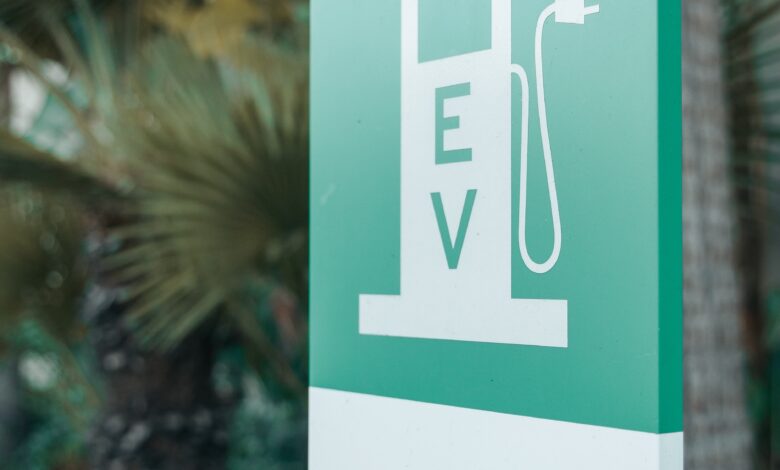How India is Building Green Transportation by EV Adoption

Discover how India is transforming its transportation sector by adopting electric vehicles to combat climate change & its future prospects.
After the Green Revolution of the 1960s in India, technology is again triggering a transformative revolution in the field of transportation. This current green mobility revolution has the potential to revolutionize transportation and counteract the effects of climate change by decreasing reliance on nonrenewable energy sources.
India was recently ranked as one of the top performers in terms of climate change performance at the COP27 conference held last year. This commitment to creating a sustainable future is demonstrated through the supportive policy environment, incentives, and motivated stakeholders who are driving the adoption of electric vehicles (EVs) in the country.
Initiatives taken by Government
It is commendable to see the government taking multiple initiatives and making a concerted effort to boost the adoption of sustainable transportation across the entire mobility ecosystem. The framework to reinforce the ecosystem is strong, with several noteworthy examples, such as the promotion of charging infrastructure, the $10 billion-dollar Production-Linked Incentive (PLI) scheme that encourages semiconductor and display manufacturing in the country, and the Faster Adoption and Manufacturing of (Hybrid &) Electric Vehicles (FAME-II) scheme with a budget of INR 10,000 crore to promote EVs.
The government is also investing in the development of smart cities with integrated public transportation systems. The National Biofuel Policy launched in 2018 encourages the use of biofuels to decrease dependence on fossil fuels. Additionally, the government has announced the implementation of Bharat Stage VI (BS VI) emission norms to reduce vehicle emissions.

The Green National Highway Corridors Project (GNHCP), which will be implemented in the states of Himachal Pradesh, Rajasthan, Uttar Pradesh, and Andhra Pradesh with financial assistance from the World Bank, is another noteworthy initiative that highlights our emphasis on sustainable mobility.
Awareness among the Consumer
In India, 43% of consumers rank sustainability as one of their top five key purchasing criteria, and 62% of Indian consumers are willing to pay a premium for sustainable products. Furthermore, around 52% of consumers plan to increase their spending on sustainable products over the next three years.
This indicates that India is approaching a tipping point in terms of sustainability awareness and consumption patterns, and the country’s heterogeneous consumer base is a driving force behind this change. As consumers become more conscious of sustainability, their preferred modes of transportation and vehicle choices are likely to be impacted as well.
Encouraging Sales Report
India has become the world’s third-largest automobile market, surpassing Japan and Germany in terms of sales. As per the latest retail stats from the Federation of Automobile Dealers Association (FADA), the sales figures for electric two-wheelers (e-2W) in February 2023 were encouraging, hitting 65,702 units. Similarly, e-3W sales hit 35,667 units, compared to 19,100 units sold in February 2022. In the electric passenger vehicle category, sales figures for February 2023 were up by 86% at 4,560 units.
This upsurge in EV sales is encouraging, indicating that both consumers and manufacturers are increasingly adopting EV technology. The trend is expected to continue to grow with increased awareness of the environmental benefits of EVs and the government’s initiatives to promote their adoption.
Auto component players
Achieving India’s net-zero targets is a collective responsibility, and the ability of stakeholders across the spectrum to act swiftly is vital to meet this objective. The Indian auto components industry, which currently contributes 2.3% to the country’s GDP, is projected to become the third-largest in the world by 2025. The industry, worth $46 billion in FY21, is expected to expand to $200 billion by 2026.
Massive growth is on the horizon
The auto component manufacturers have a crucial role in India’s shift towards low-carbon strategies. They are already taking measures toward sustainability by creating and supplying low-carbon technologies, adopting eco-friendly manufacturing practices, and promoting innovation through research and development. Furthermore, they can promote the adoption of electric and hybrid vehicles by investing in renewable energy and working together with national and international organizations to ensure that their products are best suited for such vehicles.
A truly Green Future is Awaiting
According to the Economic Survey 2022–23, the electric vehicles market in India is projected to achieve annual sales of over one crore units by 2030. The survey also indicates that this market will generate five crore direct and indirect jobs. This is a substantial increase in EV adoption within the country. The survey predicts that the domestic EV market will grow at a compound annual growth rate of 49% between 2022 and 2030.
The Bottom Line
The Indian government has taken significant steps to promote the adoption of electric vehicles, including tax incentives and subsidies, in a bid to reduce the country’s reliance on fossil fuels and curb air pollution. However, it is now up to the automotive industry to take responsibility and contribute towards the larger goal of promoting sustainable mobility in India.
The Disposal Company is helping India to build a green future by reducing the plastic footprints of many D2C brands. Check here to contact us.




